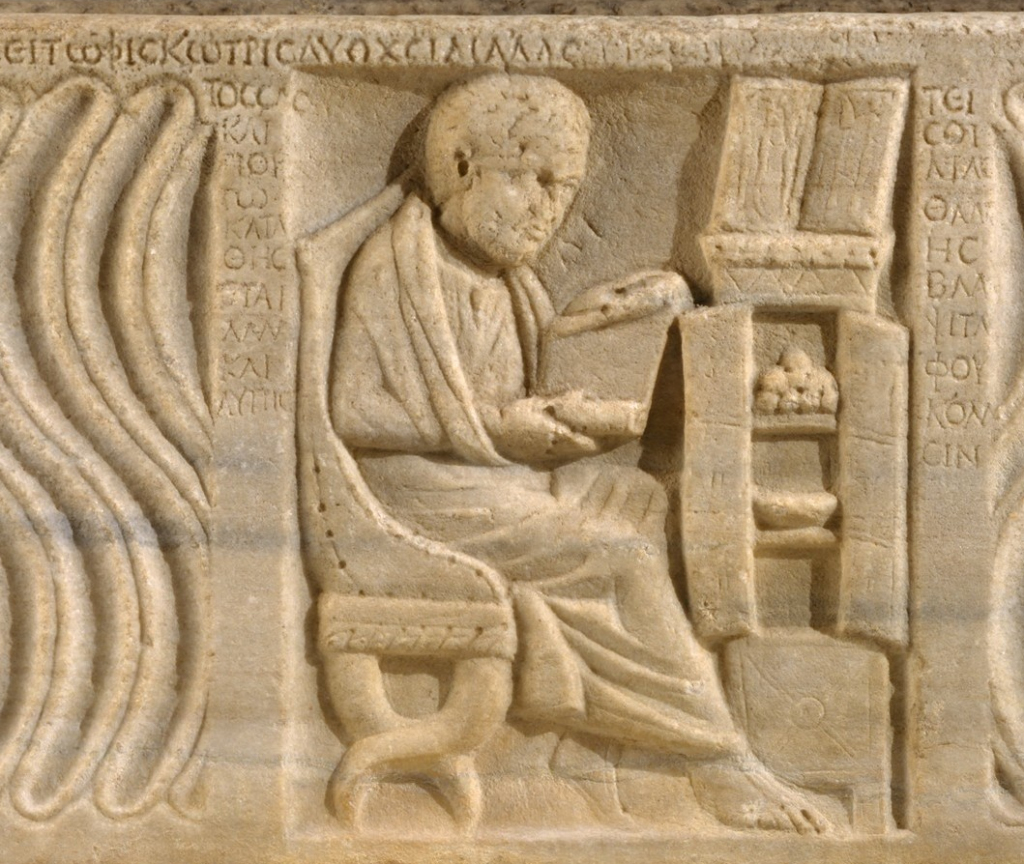Sarcophagus of a physician
Provenance unknown, but from Portus, because the inscription mentions a possible fine to Portus. Gift of the Brummer family, 1948.
Date: early fourth century AD. W. 2.14, h. 0.55, d. 0.58.
A so-called strigilated sarcophagus. The S-shapes are reminiscent of the bronze strigiles, with which oil and dirt were scraped from the body in the baths.

Anna McCann describes the relief as follows: "The figurative design is restricted to a small central panel in which a physician is seated holding a scroll. His surgical instruments, identifying the profession of the deceased, stand in his open instrument case upon a cabinet at the right. While crudely carved, some of the instruments may be identified. On the left side various probes (specilla) are seen, which were used both as sounds in wounds and for applying ointments. On the right side a scalpel with a curved blade is clearly indicated as well as a narrower instrument, probably also a probe. The curved end is similar to the ligula [shoehorn] type of specillum. His bleeding basin and scrolls are seen within the cabinet".

Above and around the physician is a Greek inscription. Portus is mentioned and the fiscus, the private Imperial treasury.

|
If anyone shall dare to bury another person along with this one, he shall pay to the fiscus three times two thousand. This is what he shall pay to Portus, but he himself will endure the eternal punishment of the violator of graves. |
| McCann 1978, 138-140. IG XIV, 943. Translation Glanville Downey. | |
Inv. nr. 48.76.1. Photo: Metropolitan Museum of Art. MMA info.